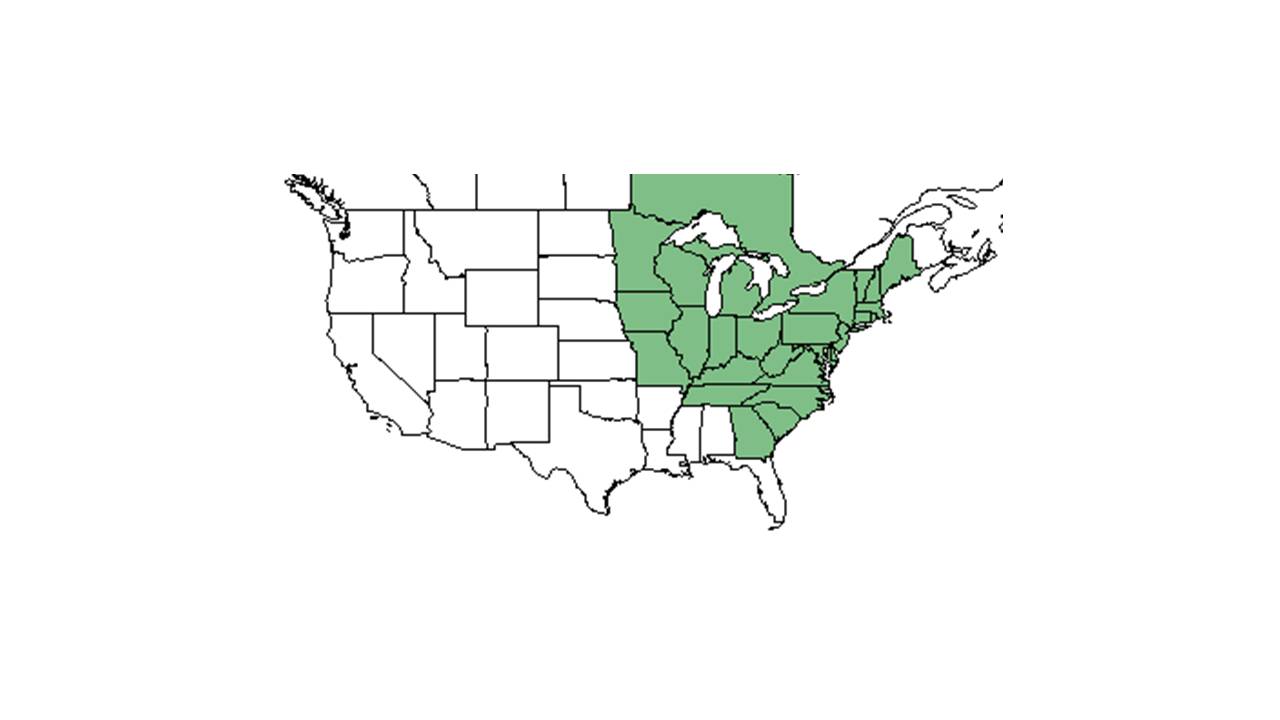Difference between revisions of "Aureolaria pedicularia"
KatieMccoy (talk | contribs) (→Ecology) |
KatieMccoy (talk | contribs) (→Description) |
||
| Line 23: | Line 23: | ||
==Description== | ==Description== | ||
<!-- Basic life history facts such as annual/perrenial, monoecious/dioecious, root morphology, seed type, etc. --> | <!-- Basic life history facts such as annual/perrenial, monoecious/dioecious, root morphology, seed type, etc. --> | ||
| + | ''A. pedicularia'' is a biennial plant that forms a basal rosette of leaves the first year and the following year becomes a branched flowering plant (Musselman et al. 1969). The stem is terete and covered with glandular hairs <ref name="Illinois''>[[http://www.illinoiswildflowers.info/savanna/plants/fernleaf_foxglove.htm Illinois Wildflowers]]Accessed: November 30, 2015</ref>. The leaves are fernlike, opposite and sessil <ref name="Minnesota">[[http://www.dnr.state.mn.us/rsg/profile.html?action=elementDetail&selectedElement=PDSCR05060 Minnesota Department of Natural Resources]] Accessed: November 30, 2015</ref>. <ref name="Illinois"/>. | ||
==Distribution== | ==Distribution== | ||
Revision as of 21:16, 30 November 2015
| Aureolaria pedicularia | |
|---|---|

| |
| Scientific classification | |
| Kingdom: | Plantae |
| Division: | Magnoliophyta - Flowering plants |
| Class: | Magnoliopsida - Dicotyledons |
| Order: | Scrophulariales |
| Family: | Scrophulariaceae |
| Genus: | Aureolaria |
| Species: | A. pedicularia |
| Binomial name | |
| Aureolaria pedicularia ((L.) Raf. | |

| |
| Natural range of Aureolaria pedicularia from USDA NRCS Plants Database. | |
Common Name: Fernleaf Yellow False Foxglove
Contents
Taxonomic notes
Synonyms: Agalinis pedicularia, Dasistoma pedicularia, Gerardia pedicularia
Description
A. pedicularia is a biennial plant that forms a basal rosette of leaves the first year and the following year becomes a branched flowering plant (Musselman et al. 1969). The stem is terete and covered with glandular hairs [1]. The leaves are fernlike, opposite and sessil [2]. [3].
Distribution
Ecology
Habitat
A. pedicularia can occur in slash pinelands, oak-hickory forests, and oak-pine forests (FSU Herbarium; Stiles 1977; Werth et al. 1979). Associated species include Pinus rigida, Castanea pumila, Pinus palustris and species of Quercus (Werth and Riopel 1979). It is a hemiparasitic plant, with a strong affinity for oaks (Musselman and Grelen 1979). Musselman et al. (1969) suggested that A. pedicularia was specific to oak species, however studies have shown populations growing without oaks hosts (Musselman and Grelen 1979; Werth and Riopel 1979). Werth and Riopel (1979) suggest that it does not exhibit a promiscuous parasitism characteristic, but a selectivity for fagaceous roots.
Phenology
Seed dispersal
Seed bank and germination
Germination occurs after cold treatment at 4.5 degrees Celsius for 5 months.[4]
Fire ecology
Pollination
Use by animals
Diseases and parasites
Conservation and Management
Cultivation and restoration
Photo Gallery
References and notes
Florida State University Robert K. Godfrey Herbarium database. URL: http://herbarium.bio.fsu.edu. Last accessed: October 2015. Collectors: Robert K. Godfrey. States and Counties: Florida: Wakulla. Compiled by Tall Timbers Research Station and Land Conservancy.
Leicht-Young, S. A., N. B. Pavlovic, et al. (2009). "A comparison of seed banks across a sand dune successional gradient at Lake Michigan dunes (Indiana, USA)." Plant Ecology 202: 299-308.
- ↑ [Illinois Wildflowers]Accessed: November 30, 2015
- ↑ [Minnesota Department of Natural Resources] Accessed: November 30, 2015
- ↑ Cite error: Invalid
<ref>tag; no text was provided for refs namedIllinois - ↑ Musselman, L. J. (1969). "Observations on the life history of Aureolaria grandiflora and Aureolaria pedicularia (Scrophulariaceae)." American Midland Naturalist 82: 307-311.